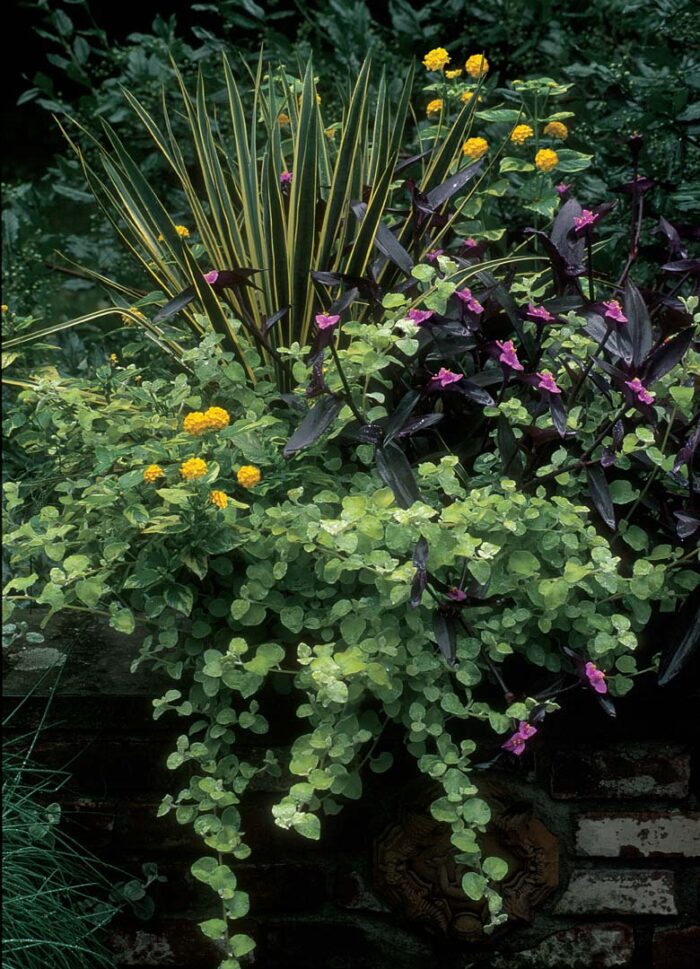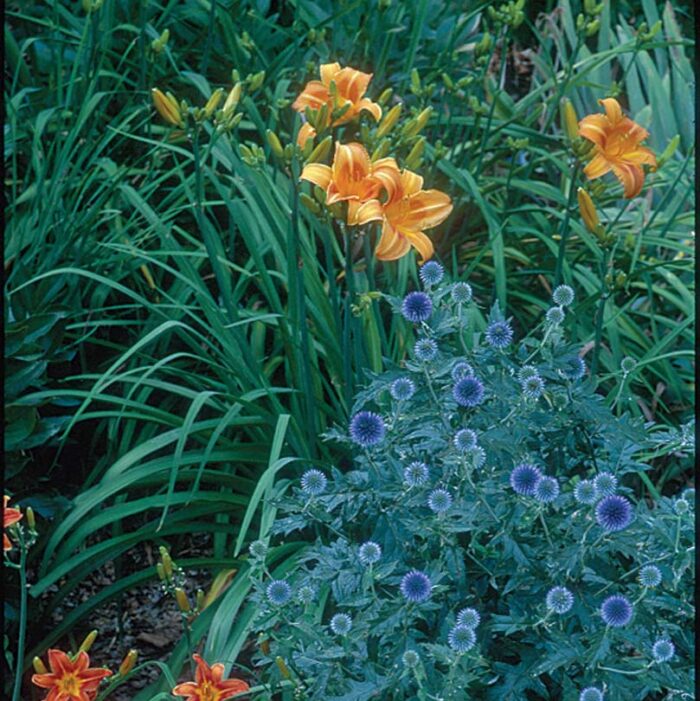Plant Combinations That Work
Enhance your designs by making the most of contrast and harmony

For a plant combination to work, the arrangement of the colors, shapes, sizes, and textures must add up to a complete and satisfying unit. As with all good design, it’s a matter of blending similarities and differences in pleasing proportion to one another.
Learn more: Inspired Plant Combinations
In human affairs as well as in art, harmony is the product of likeness—of shared qualities and mutual accord. Contrast, on the other hand, depends for its effect on differences, which produce drama and, if those differences are extreme, conflict. The secret of combining disparate ingredients is to preserve the peace but not at the cost of excitement.
 |
 |
 |
In terms of colors, an inexpensive color wheel can guide you in choosing combinations that sing by virtue of their differences or that soothe with calming likeness. Pairing opposites always works—hence the success of combinations like blue and orange, yellow and violet, or red and green. Another safe bet is to group colors that share a common pigment and a strong kinship, like violet, red-violet, and blue-violet. These principles also relate to plant shapes, sizes, and textures. Here are some of the many ways to make harmony and contrast work within a planting.
Contrasting shapes and complementary colors
 |
 |
1. Adam’s needle (Yucca filamentosa ‘Bright Edge’, Zones 5–10)
2. Tradescantia (Tradescantia pallida ‘Purple Heart’, Zones 10–11)
3. Licorice plant (Helichrysum petiolare ‘Limelight’, Zones 10–11)
4. Lantana (Lantana camara ‘Samantha’, Zones 10–11)
Confining the hues in this planting to yellow and violet (color opposites or complements) gives a degree of harmony to an otherwise highly contrasting combination. While all the colors are either tints or tones of purple and yellow, the opposing forms and textures create tension with the stiff, erect leaves of variegated yucca thrusting out of a mass of smaller, softer, more rounded leaves provided by licorice plant and variegated lantana.
Similar colors with different shapes
 |
 |
1. Garden phlox (Phlox paniculata ‘Eva Cullum’, Zones 4–8)
2. Purple coneflower (Echinacea purpurea, Zones 3–9)
Matching the colors of two or more flowers, while varying their shapes, is another way to guarantee a winning combination. The cool pink hues of the coneflower and the phlox are closely related if not identical. But the structure of the flower heads offers striking contrast. The coneflower’s humble prairie origins are apparent in single blossoms that resemble coarse daisies, while the lush, pyramidal clusters of phlox florets bespeak the civilized world of the garden.
Contrasting leaf patterns
 |
 |
1. Hydrangea (Hydrangea arborescens ‘Annabelle’, Zones 4–9)
2. Mrs. Robb’s bonnet (Euphorbia amygdaloides var. robbiae, Zones 6–9)
3. Japanese painted fern (Athyrium niponicum var. pictum, Zones 5–8)
Nothing is more restful than a skillfully assembled group of foliage plants. In this combination, created by Wesley Rouse in his Connecticut garden, there are subtle differences in the shades and tints of green. The sooty euphorbia foliage provides a foil for the ice green of the painted fern and also contrasts with the lighter, brighter green of the hydrangea leaves above it. There are also pronounced differences in the leaves’ sizes, shapes, and patterns, from the radial arrangement of euphorbia foliage and the elegant, fish-bone design of fern fronds to the large, simple, alternating leaves of the hydrangea.
Soft tones and strong shapes
 |
 |
1. Japanese maple (Acer palmatum ‘Crimson Queen’, Zones 6–8)
2. Globe thistle (Echinops bannaticus ‘Taplow Blue’, Zones 5–9)
3. Nettle-leaved mullein (Verbascum chaixii, Zones 5–9)
Juxtaposing industrial-strength blue and caution-sign yellow creates a sharp, rather harsh contrast because the two hues have no common bond and are at considerable distance from each other on the color wheel. They are just too different. But soften the one to a frosty steel blue and the other to primrose yellow, and you have a marriage made in heaven. Set them both against a deep, low-intensity tone of red, and you have a plant combination that boasts tonal harmonies enlivened with contrasting shapes.
Variations in height and texture
 |
 |
1. Gold threadleaf falsecypress (Chamaecyparis pisifera ‘Filifera Aurea Nana’, Zones 4–8)
2. Adam’s needle (Yucca filamentosa ‘Golden Sword’, Zones 5–10)
3. Singleseed juniper (Juniperus squamata ‘Blue Star’, Zones 5–8)
4. Lambs’ ears (Stachys byzantina, Zones 4–8)<
The heart and soul of this design is difference. A clump of yucca with its rigid, swordlike leaves furnishes an authoritative vertical shape to contrast with the prevailing softness and low profiles of the false cypress, juniper, and lambs’ ears. But the ceramic ball, created by artist Elizabeth MacDonald, with its solid form, rough and earthy texture, and sky-stealing tint of summer blue, elevates an attractive group of plants to an eye-catching garden centerpiece.
Three harmonious hues
 |
 |
1. Heliotrope (Heliotropium arborescens ‘Blue Wonder’, annual)
2. Ornamental cabbage (Brassica oleracea cvs., annual)
This trio of colors, which includes violet, blue-violet, and red-violet, would please even Gertrude Jekyll, the discriminating British garden designer who preferred the fine distinctions found in harmony to the invigorating clash of contrast. As a rule, the closer the colors are to each other, the sweeter their song together. For devotees of closely related hues, the frilly leaves of this ornamental cabbage unite blue-violet and red-violet with the deep, true violet flowers of heliotrope, which is about as close to a perfect harmony as you can get.





Comments
What are the blue globe flowers in front of the day lilies? Beautiful. Nice article!
Probably a bit late to the party but the plant you are looking for Nancy is an Echinops
Log in or create an account to post a comment.
Sign up Log in